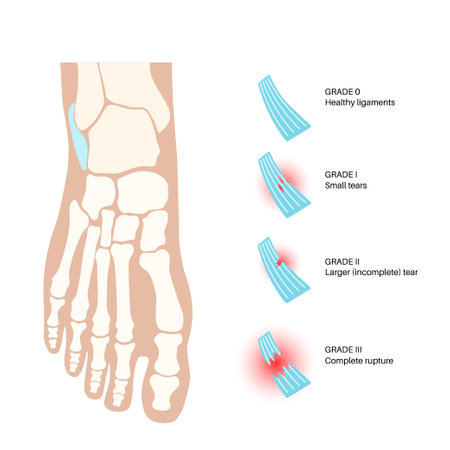1. Understanding Rotator Cuff Injuries
The rotator cuff is a group of four small muscles and their tendons that surround the shoulder joint, keeping the head of your upper arm bone firmly within the shallow socket of your shoulder. These muscles—supraspinatus, infraspinatus, teres minor, and subscapularis—work together to provide stability and allow you to lift and rotate your arm. When any of these muscles or tendons are injured, it can lead to pain, weakness, and limited movement.
Common Mechanisms of Rotator Cuff Injuries
| Injury Mechanism | Examples |
|---|---|
| Acute Injury | Falling on an outstretched hand, lifting something too heavy, sudden jerking motions |
| Overuse/Chronic Injury | Repetitive overhead activities (like painting, throwing, swimming), aging/wear-and-tear |
| Degenerative Changes | Tendon weakening with age, poor posture, lack of shoulder mobility or strength over time |
Why Proper Rehabilitation Is Crucial
If you’ve experienced a rotator cuff injury, you’re not alone—it’s one of the most common causes of shoulder pain in American adults, especially those who play sports or have physically demanding jobs. But it’s important to remember that proper rehabilitation isn’t just about reducing pain. Without the right approach, you might end up with long-term weakness or even re-injury.
- Restore Function: Targeted exercises and therapy help regain your shoulder’s strength and flexibility so you can get back to daily tasks like reaching overhead or carrying groceries.
- Prevent Stiffness: Gentle movements prevent “frozen shoulder,” a condition where your joint gets painfully stiff.
- Avoid Re-Injury: Learning correct movement patterns protects your shoulder during recovery and for years to come.
- Boost Confidence: Gradual progress helps you trust your shoulder again for work, hobbies, and sports.
Understanding what’s going on inside your shoulder is the first step to overcoming the common challenges of rotator cuff rehab. With this foundation, you’ll be better prepared for each stage of recovery—and more likely to return safely to all the things you love doing every day.
2. Pain Management During Rehabilitation
Understanding Pain in Rotator Cuff Rehab
Pain is a common part of rotator cuff rehabilitation, but knowing how to manage it can make the process smoother and more effective. Some discomfort is expected as you work to regain strength and flexibility, but too much pain can slow your progress or even cause setbacks.
Strategies for Managing and Reducing Pain
Medication Options
Over-the-counter medications like acetaminophen (Tylenol) or nonsteroidal anti-inflammatory drugs (NSAIDs) such as ibuprofen (Advil, Motrin) can help control pain and inflammation. Always check with your healthcare provider before starting any medication, especially if you have other health conditions or take other prescriptions.
Using Ice and Heat
| Modality | When to Use | How to Apply |
|---|---|---|
| Ice | Soon after exercise or if you notice swelling and sharp pain. | Apply for 15-20 minutes, using a towel between ice and skin. |
| Heat | Before stretching or exercise to loosen muscles. | Apply for 15-20 minutes, using a heating pad or warm towel. |
Pushing Through Discomfort vs. Knowing When to Stop
Its important to distinguish between normal rehab soreness and signs that youre overdoing it. Mild discomfort or muscle fatigue during exercises is okay, but sharp, shooting pain or increased swelling means you should stop and rest. If you’re not sure whether what you’re feeling is normal, talk to your physical therapist—they can help guide your activity level safely.
Tips for Listening to Your Body:
- If pain gets worse during an exercise, stop immediately.
- If discomfort lingers more than an hour after activity, you may need to scale back.
- If you notice redness, heat, or swelling, use ice and let your therapist know.
- Gradually increase activity—don’t rush the process!
Managing pain well sets the stage for a successful recovery journey. Consistency and patience are key—along with the right tools and strategies tailored to your needs.

3. Compliance and Motivation
The Struggle to Stick With Home Exercises
One of the most common hurdles in rotator cuff rehabilitation is staying consistent with your home exercise program. Many Americans find it challenging to fit rehab exercises into their daily routines, especially when juggling work, family, and other responsibilities. It’s easy to skip a session or two, but regular practice is key to recovery.
Why Is It So Hard to Keep Up?
| Challenge | Real-Life Example | How It Impacts Rehab |
|---|---|---|
| Busy Work Schedules | Long work hours or overtime | Lack of time or energy for exercises |
| Family Obligations | Caring for kids or elderly parents | Interrupted sessions or missed days |
| Pain or Discomfort | Feeling sore after starting exercises | Avoiding movements that cause pain |
| Lack of Immediate Progress | Not seeing quick results | Losing motivation or feeling frustrated |
| Boredom with Routine | Repeating the same exercises daily | Skipping sessions due to lack of interest |
Tips to Stay Motivated and Consistent
- Set Realistic Goals: Break your rehab plan into small, achievable milestones—like being able to reach a shelf or carry groceries again.
- Create a Schedule: Block out specific times each day for your exercises, just like you would for meetings or appointments. Early morning or after dinner works well for many people.
- Use Reminders: Set alarms on your phone, use sticky notes on the fridge, or ask a family member to remind you.
- Track Your Progress: Keep a simple log of your exercises. Seeing improvement, even if it’s slow, can boost your spirits.
- Add Variety: If your therapist approves, mix up your routine with new exercises or different settings—try doing some stretches while watching TV.
- Get Support: Involve family members, join online support groups, or stay in touch with your physical therapist for encouragement and accountability.
- Celebrate Wins: Reward yourself when you hit a goal—whether it’s a favorite treat, a movie night, or extra relaxation time.
Balancing Rehab with Daily Life in America
It’s not always possible to set aside big chunks of time for rehab. Try these practical strategies:
- Sneak in Exercises at Work: Do simple shoulder stretches at your desk or during breaks.
- Involve Your Family: Make it a group activity—kids can “coach” you through your routine.
- Pair with Daily Habits: Link exercises to something you already do every day, like brushing your teeth or making coffee.
- Treat Rehab Like an Important Appointment: Prioritize it as you would any doctor visit or work meeting.
Your Path Forward
No matter how busy life gets, finding ways to stay motivated and consistent with your rotator cuff rehab makes a real difference. Remember: progress is progress, no matter how small!
4. Regaining Range of Motion and Strength
Identifying Barriers to Recovery
After a rotator cuff injury or surgery, many people struggle with stiffness, weakness, and discomfort. Common barriers to regaining flexibility and strength include pain during movement, fear of re-injury, swelling, and muscle tightness. Sometimes, people may also feel discouraged if progress seems slow or if daily activities are still difficult.
Practical Tips for Safe and Effective Exercise
Sticking with your rehab plan is important, but it’s also essential to do exercises safely. Here are some practical tips you can use:
| Tip | What to Do | Why It Matters |
|---|---|---|
| Warm Up First | Use a heating pad or do gentle arm circles for 5-10 minutes before starting exercises. | This helps loosen up the muscles and makes stretching easier. |
| Start Slow | Begin with small movements and light resistance (like a towel or light band). | Prevents overloading your shoulder and reduces risk of pain flare-ups. |
| Pain Check | If you feel sharp pain, stop the exercise right away. | Pain is a signal that something isn’t right—listen to your body! |
| Consistency Is Key | Do your assigned exercises daily or as recommended by your therapist. | Regular practice helps restore movement and rebuilds strength gradually. |
| Breathe and Relax | Don’t hold your breath—exhale during exertion and keep shoulders relaxed. | This prevents unnecessary tension in your neck and upper back. |
When to Seek Guidance from a Physical Therapist
If you notice increased swelling, constant pain, or no improvement after several weeks, it’s time to check in with your physical therapist. They can adjust your program and make sure you’re moving at the right pace. Also, if you’re unsure how to do any exercise correctly or feel anxious about progressing, don’t hesitate to ask questions. Getting feedback from a professional ensures you stay safe and get the best results possible.
5. Preventing Re-Injury and Long-Term Maintenance
Safe Progression During Rehabilitation
One of the biggest challenges after a rotator cuff injury is knowing when and how to safely increase your activity. Progressing too quickly can lead to re-injury, while moving too slowly may cause stiffness or weakness. Here’s a simple guide to help:
| Phase | What To Do | What To Avoid |
|---|---|---|
| Early Rehab | Gentle range-of-motion and basic strengthening exercises | Lifting overhead, heavy weights, sudden movements |
| Mid Rehab | Add resistance bands, light weights, focus on shoulder stability | Pushing through pain, sports drills, fast-paced activities |
| Late Rehab/Return to Activity | Sport-specific or work-related movements under guidance | Skipping warm-ups, ignoring soreness, high-impact actions without clearance |
Returning to Sports or Work Safely
Going back to your favorite sport or job after a rotator cuff injury can be exciting—but it requires planning. Always check with your physical therapist or doctor before returning. Start with modified activities and build up gradually. For athletes, practice skills at half-speed first. For workers, use ergonomic tools and ask for lighter duties if possible.
Tips for a Safe Return:
- Warm up properly: Spend at least 5-10 minutes on dynamic stretches before activity.
- Pace yourself: Increase intensity slowly over weeks, not days.
- Listen to your body: If you feel pain (not just muscle fatigue), stop and rest.
- Use proper technique: Ask for coaching if you’re unsure about safe movement patterns.
- Wear supportive gear if needed: Shoulder braces or taping can offer extra support early on.
Long-Term Shoulder Health Habits
The best way to prevent future injuries is by making shoulder care part of your routine—even after you’ve fully healed. Try these habits:
- Regular strength exercises: Focus on rotator cuff and upper back muscles 2-3 times per week.
- Stretch often: Keep shoulder muscles flexible with daily stretches.
- Avoid repetitive overhead tasks when possible: Take breaks if your job or sport requires these motions.
- Stay active overall: General fitness keeps all muscles balanced and supports joint health.
- Check your posture: Good posture reduces strain on your shoulders throughout the day.
SAMPLE WEEKLY SHOULDER CARE ROUTINE
| Day | Main Focus | Example Activity |
|---|---|---|
| Monday | Strengthening | Banded external rotations, scapular rows (15 reps x 2 sets) |
| Wednesday | Mobility & Stretching | Pendulum swings, cross-body stretch (hold 30 sec x 2) |
| Friday | Total Body Fitness | A brisk walk, yoga, or swimming (30 minutes) |
| Daily Habit | Posture Check & Short Stretch Breaks | Sit tall at desk, roll shoulders back every hour, gentle arm circles (10 reps) |
By following these strategies, you can keep your shoulders strong and healthy for the long haul—and stay in the game at work or play without worrying about setbacks.


